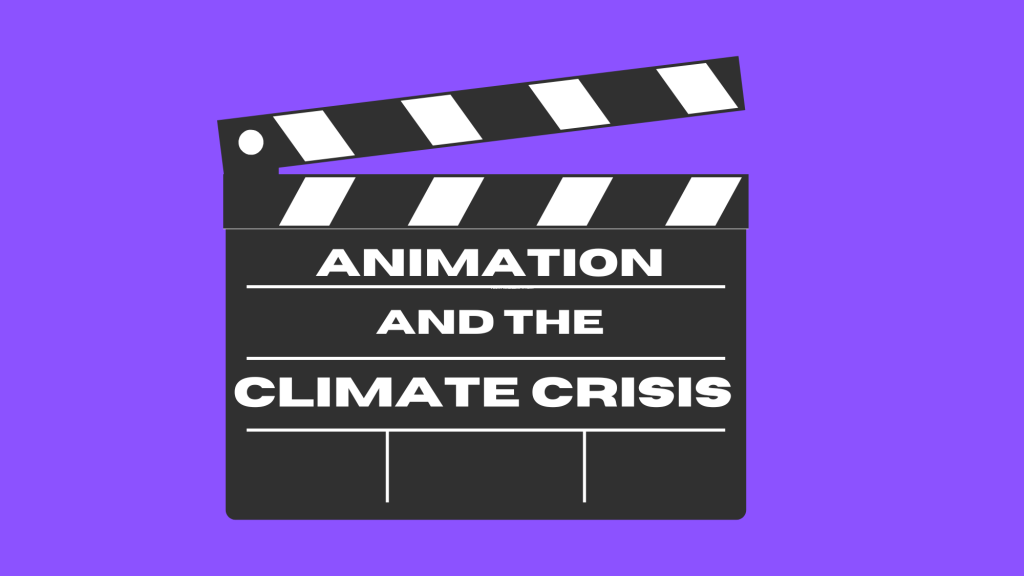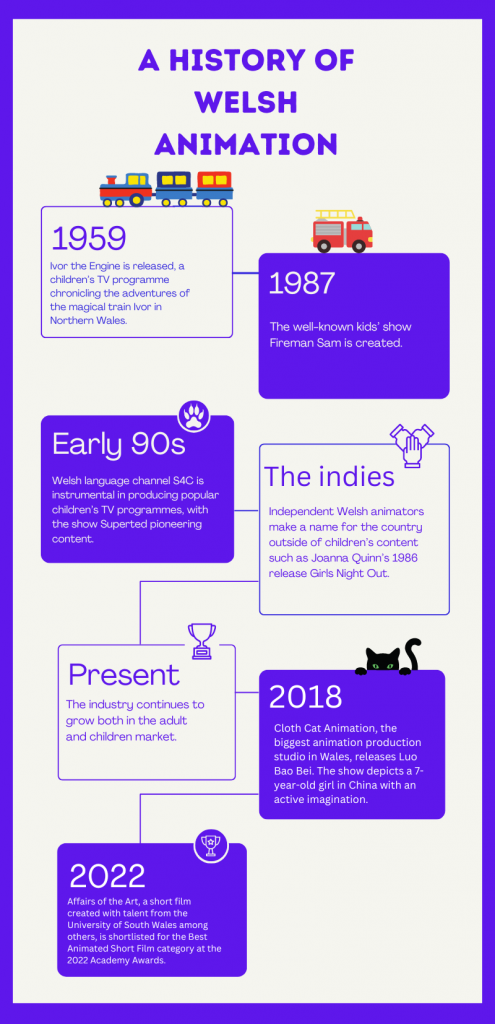Cardiff’s animation industry is bigger than ever, but what can animators do for the sector’s sustainability?

Laura Tofarides wanted to work in the animation industry since she was first given a clunky camcorder as a child.
“I figured out that if you take a picture of something and then move it a little bit, it comes to life. I just thought stop-motion animation was magic,” said the freelance stop-motion animator.
Now Laura is a full-time working professional in the animation industry, she has more to consider than the technical and creative aspect of the job.
She must also think about how each of her productions affects the planet.
In Cardiff, the film and TV industry is becoming increasingly popular, and South Wales is home to the third largest media sector in the UK.
Senedd Cymru aims to reach net zero by 2050, meaning they want to cancel out the amount of greenhouse gases produced by human activity.
As COP27 throughout November this year did not provide clear guidance for the film or animation industries specifically to reduce their carbon footprint, answers for the next generation filmmakers on how to be climate conscious and creative are more sought after than ever.
What needs to change
Cardiff Animation Festival, a biennial celebration of animation, has a dedicated following locally and internationally. Throughout the pandemic, organisers of the festival researched how the animation industry in Wales could reduce the amount of carbon emissions in their workplaces.
They published a report which identifies the challenges that the animation industry will face in the future. From this, they predicted that working from home and cloud-storage was much more energy efficient.
Cloth Cat Animation, a 2D animation studio based in Cardiff, is one of the companies included in the report.
People would be shocked how carbon intensive the process of making a film is
Chris Hill
Jon Rennie, company director, said: “I was drawn to Welsh animation partly because I grew up here, but also because we have a proud history of animation.
“We are a creative country with a small but active animation community.”
Rennie said the path towards being a carbon neutral workplace became a lot clearer from the report’s findings.
The studio moved to working-from-home during the pandemic and have stuck to this post-lockdown, as it is projected to reduce their carbon emissions by 19%. Rennie first started working in the animation industry during the early 2000s.

He began at Dinamo Productions, a Welsh animation studio founded in 2004 that specialised in 2D and 3D animated children’s shows.
He said animation has some different issues to tackle compared to live-action production.
“With stop-motion animation, for example, the sets may be smaller but you still need to have lights on constantly.
“As we work in 2D animation, we are always using computers which wastes a lot of energy.”
From working in the industry for so long, he has seen how far Welsh animation has come, and how it needs to change in terms of sustainability.
He commented: “Wales has the ability to lead because it has the capacity to produce energy,” referencing tidal and wind energy as possible solutions.
“We have all the technical knowledge – all we need to do is get on with it.”
But not all of the decisions are in the hands of the workers in the animation industry.
Out of our control
“We are not in control of the infrastructure around the industry,” said Rennie. For example, if an animation company is only renting their offices, they have no say on the energy provider.
“We are reliant on what they decide.”
Ffilm Cyrmu launched the Green Cymru Challenge Fund in July 2021 to help companies overcome this barrier. Chris Hill, Ffilm Cyrmu’s green manager, said although the programme is in its early stages, there has been a positive reception from the film community.
He said: “People would be shocked how carbon intensive the process of making a film is.”
“The audience only sees the end result. The negative environmental impact is bigger than people think.” He cited transport, energy, materials and even catering as parts of film production to consider.
An insider’s perspective
Find out more about how one animator’s way of working has been impacted by the climate crisis:
The next generation
The future looks hopeful, said Hill, but everyone needs to acknowledge the changes the film industry must make.
“People in the film industry need to know the simple changes they can make and how much of a difference they can make in the workplace,” said the 28-year-old.
Laura Tofarides said she has already seen colleagues incorporating climate conscious actions into their work.
The 30-year-old said: “One of my co-workers used real food for a shoot instead of making models.”
This saved having to throw away plastic and metal from the models, as the real food was eaten or used in food waste.
“I try my best to recycle materials. You can scrape clay off models to re-use but the plastic and metal beneath the surface cannot be recycled,” she said.
“It is small changes like this that mean we can make a difference.”
She may not have envisaged re-using and saving material from her models when she received her first camcorder, but Laura’s passion for the future of the animation industry and the planet continue to fuel her work.
It is creators like Laura who will lead the next generation of animation and ensure that productions are as sustainable as possible.
